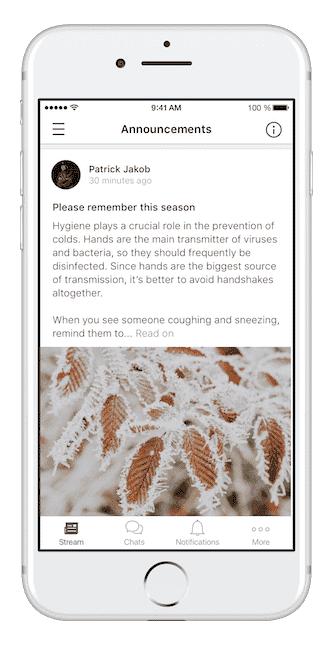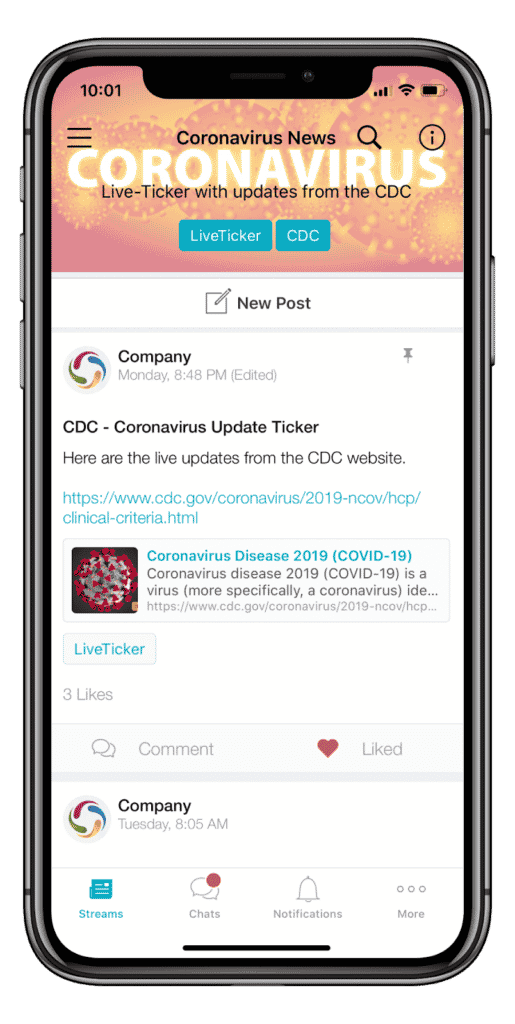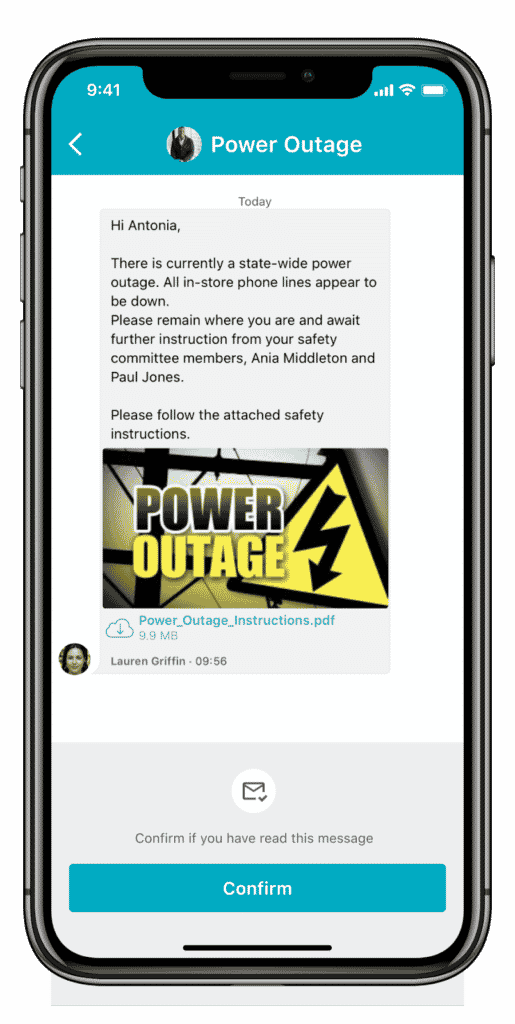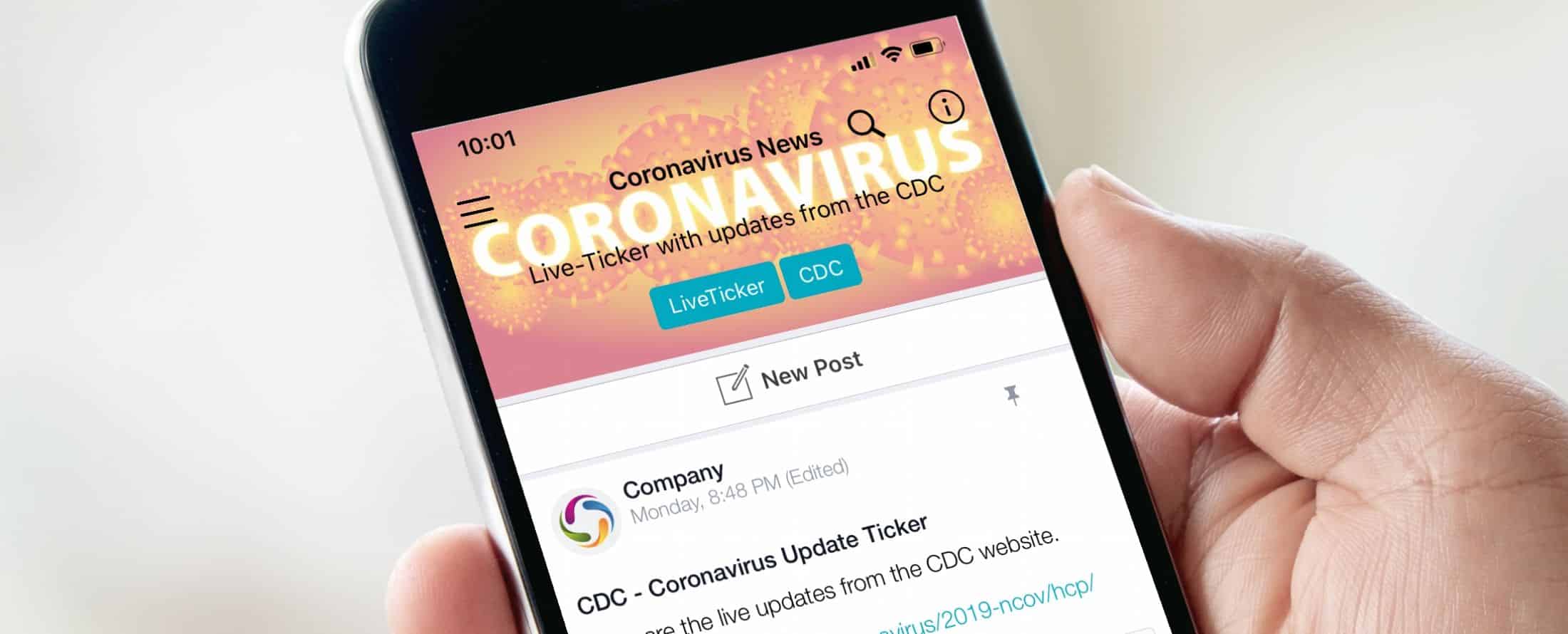Companies are feeling the effects of the current COVID-19 pandemic sweeping across the globe. To limit the disruptive nature of this crisis, it’s necessary for business leaders to keep their employees informed, engaged, and aligned through good communication practices.
Whether it’s a fast-moving storm headed your way or a global pandemic, the ability to communicate with your employees has never been more important. The right messaging and the right tools can keep business operations moving with as little disruption as possible, but—more importantly—it can also ensure the safety of your staff.
As the situation with the coronavirus pandemic unfolds, remember that leading during an emergency situation requires calm and confident communication.
As the situation changes so rapidly, it’s shedding light on the need for real-time, enterprise-wide communication as people are following social distancing orders. For companies, this means millions of employees are suddenly working from home and accessing their managers and colleagues by email.
But frontline workers make up 80% of the world’s workforce, and they need to be included in crisis communications. They are often the only teams who remain at work during times like this and they can offer valuable insight into what’s happening onsite. They also need to be kept apprised of pertinent information for both safety and planning reasons.
In a rapidly-changing scenario like the one we’re currently experiencing, there are two important elements of internal communications to keep in mind:
- Confident and supportive messaging to keep your teams aligned and informed in a time of uncertainty.
- The right digital tools to disseminate information rapidly to every single employee.
How the Red Cross Stays Connected During a Disaster
Even in everyday business communication, email has its limits. For both desk-based and frontline workers, an employee communication app is the most effective way to reach everyone wherever they are. It’s also a way to direct the crisis narrative as they relate to your teams and the work they perform.

The Red Cross is often on the frontlines of emergencies around the globe, with courageous humanitarian workers descending on hotspots to care for those in the middle of a disaster. When an 80-person team within the German Red Cross wanted to optimize crisis communications, they needed a solution that could keep up with the unpredictable nature of their work. Beekeeper’s mobile platform enabled them to create a hub to disseminate information, and break down communication silos while ensuring data security for a team always on the move around the world.
During a crisis, a mobile workforce app allows you to:
- Relay up-to-the-minute information with real-time tools for a rapidly changing situation.
- Connect dispersed employees across multiple locations.
- Communicate with every employee at once for unified messaging.
- Have employees swap shifts directly with one another.
- Get vital messages to your diverse workforce in their preferred language with inline translation.
- Create virtual meetings through group chats when in-person is not possible.
- Share safety information through the document library.
How a Crisis Impacts Frontline Workers
Frontline workers are literally the teams on the frontlines during a crisis. From healthcare workers at nursing homes to maintenance and custodial teams keeping facilities clean and operating, these essential workers are often on site and need to receive every bit of information leaders are sending out.
This is where two-way and bottom-up communication comes in. Leaders, and home-based staff, need the insight from frontline teams about what’s happening on site. Also, with a crisis of this magnitude, employees will have a lot of questions. A digital workplace creates a portal for two-way communication to make sure employees can ask questions like:
- Will I lose my job?
- Will my hours be cut?
- Will the company go out of business?
- Will I get sick at work?
- What if I lose my benefits?
- Where can I find resources to help me and my family?
A mobile platform is a place they can pose questions to their managers and one another and offer support.
5 Actionable Tips for Communicating with Employees During a Crisis
During any crisis, unified and immediate information can help keep things calm in an otherwise chaotic situation. Here are five ways to implement a digital strategy to effectively communicate with your employees during a global pandemic, a natural disaster, or any crisis that impacts the health and safety of your employees.
1) Create a crisis communication task force
Before a situation arises, create a crisis communication task force that has emergency procedures and roles mapped out in advance. When the unthinkable happens, your team will be ready to manage the communications command center for your organization through the workforce app.
2) Become a primary source for reliable communication
They can create group chats, dedicate crisis communication streams, and send out surveys to ensure uninterrupted communication and that every employee receives urgent information.
So much news is flying around during a crisis that it’s hard to know where to turn for accurate information, adding to the chaos and anxiety. 63% of employees recently surveyed said they look for daily updates from their companies.

Become the primary source of information for your staff. Use your crisis communication stream to create a feed of reliable sources to give everyone the right information.
3) Use a mobile workforce management app to keep two-way communication open
Crisis and chaos build fear and anxiety. Be a sounding board for your employees. Use your mobile platform to field questions and keep people informed. It will be better for them and better for your business if teams remain calm.
4) Track who is receiving information
A workforce management app is a great way to track overall engagement among employees. But in a crisis, use your analytics dashboard and confirmation campaigns to track engagement to ensure people are receiving messages for their safety and well-being.

5) Be a source of non-work related information
Take care of your employees by being a resource for things they and their families might need outside of work. Create a communication stream dedicated to information about local resources they might need during a crisis—like food supplies, childcare, or medical facilities.
During a crisis event like the coronavirus, business leaders need to be a source of reliable information and maintain a calm demeanor. By implementing a good internal communications plan, you can keep your entire team connected until you’re back to business as usual.







